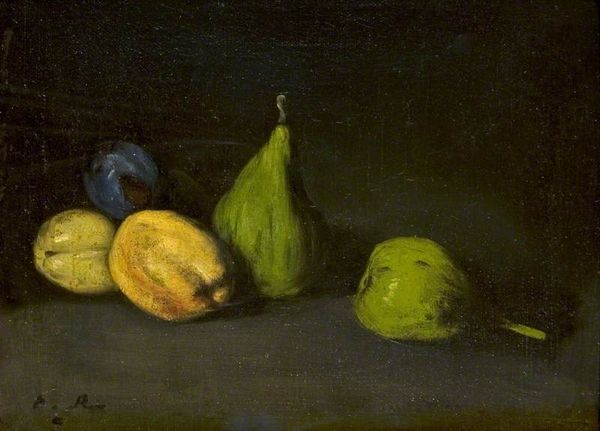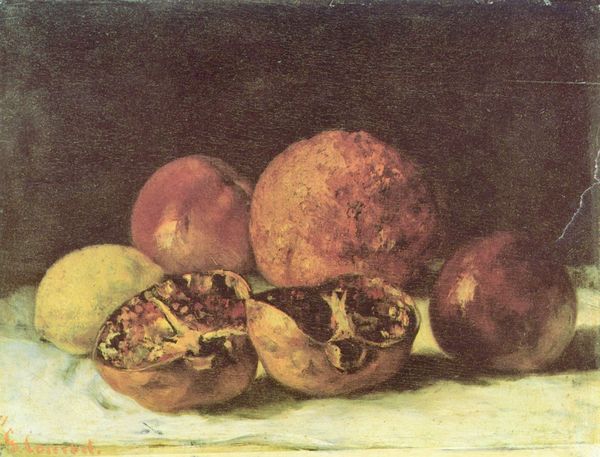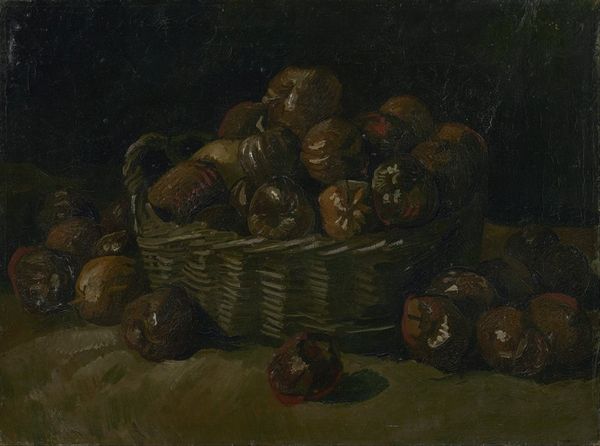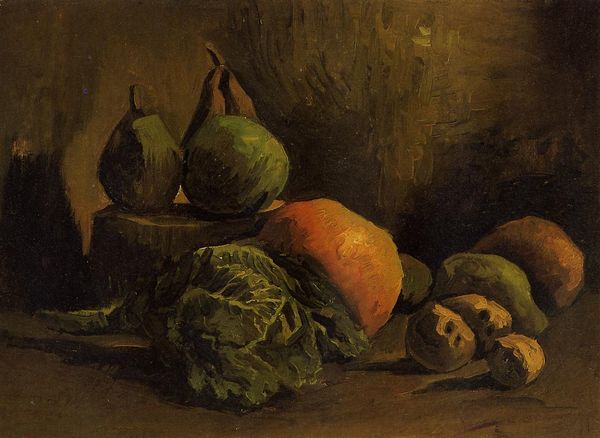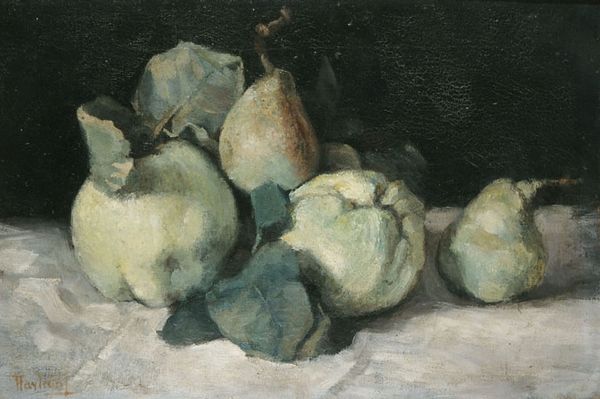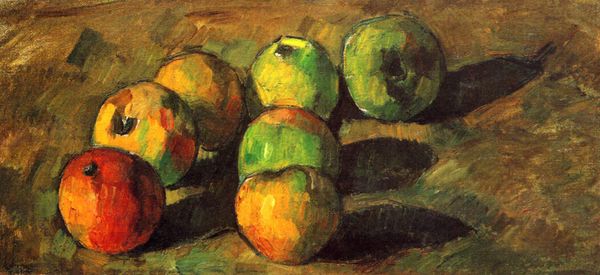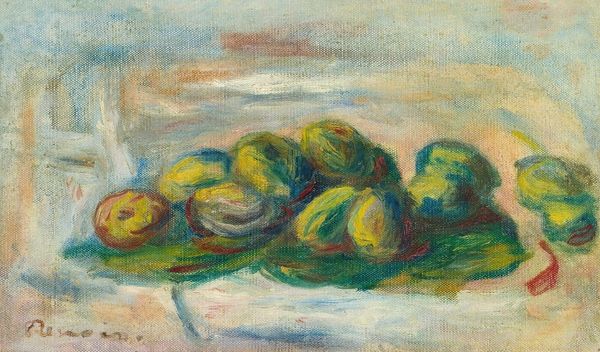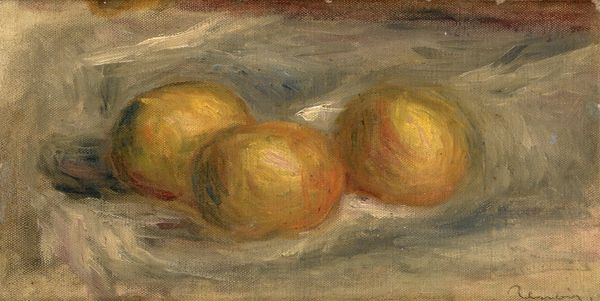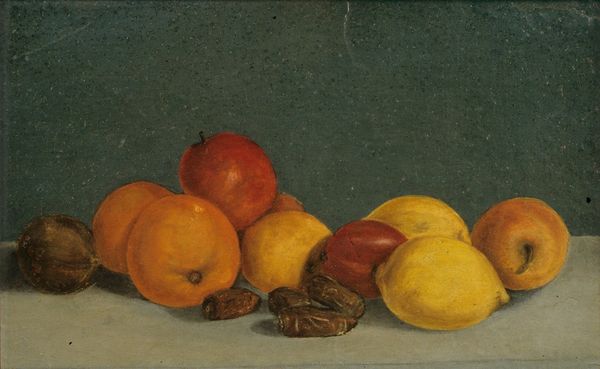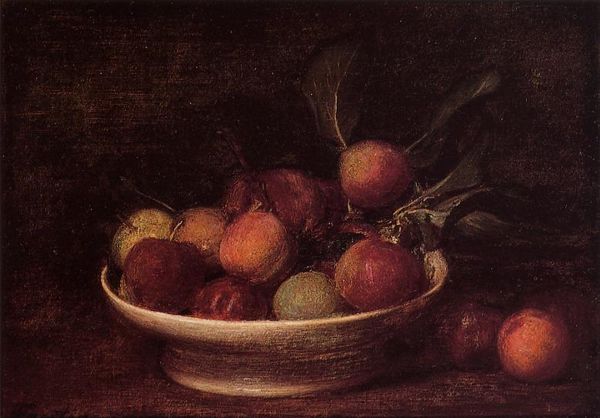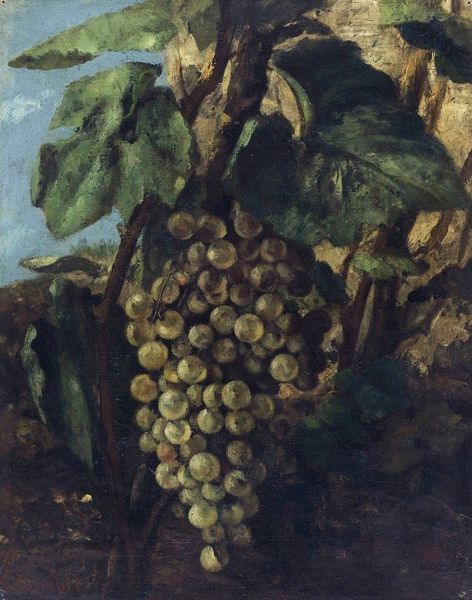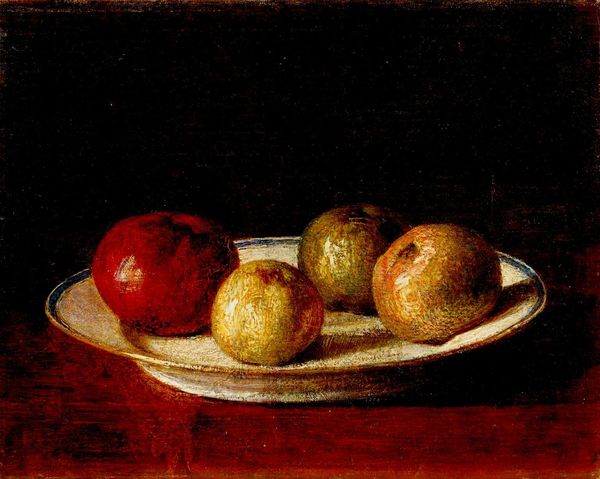
painting, oil-paint, impasto
#
table
#
dutch-golden-age
#
painting
#
oil-paint
#
oil painting
#
impasto
#
fruit
#
underpainting
#
post-impressionism
Copyright: Public domain
Curator: Let’s take a moment to observe Vincent van Gogh's "Still Life with Basket of Apples" from 1885. What strikes you most at first glance? Editor: The density. It's not just the packed arrangement of fruit, but also the darkness, like a memory barely emerging from the depths. Curator: Indeed. The impasto is particularly striking, especially given that Van Gogh's later work features so many visible, directional brushstrokes. Here, the surface is almost aggressively textured. It's as if he’s modeling with the oil paint rather than simply applying color. We also see an earthy color palette, which really exemplifies the Dutch Golden Age tradition. Editor: But let's consider the period. 1885 was a brutal year of widespread famine across Europe. In depicting such simple items of sustenance in such a deliberately artistic way, is van Gogh speaking to these disparities, ennobling the plight of working people while reflecting themes common to artists of his era? Curator: That’s compelling. Formally, though, notice how the dark background serves to throw these fruits into relief. The interplay between the organic roundness of the fruit and the basket's sharp edges creates a subtle tension, an exercise in perspective and dimension, the planes defined so that they simultaneously exist as themselves and recede into darkness. Editor: But that very tension speaks volumes, right? It suggests a visual representation of precariousness, highlighting themes relevant to people that year: subsistence threatened and hard work that doesn't ensure enough for survival. What may seem a simple composition, isn't simply about the artist's interest in texture and paint, but how the world looks when your existence is insecure. Curator: That context provides rich interpretive possibilities. The genius here is really in the dynamic interplay between his attention to visual space, surface and plane. Editor: Perhaps. To really understand the impact and depth, though, we should ask not just about art, but also about historical moment, its most powerful themes, and whom it could address and how. Curator: A good way of summarising it; both artistic and sensitive.
Comments
No comments
Be the first to comment and join the conversation on the ultimate creative platform.
